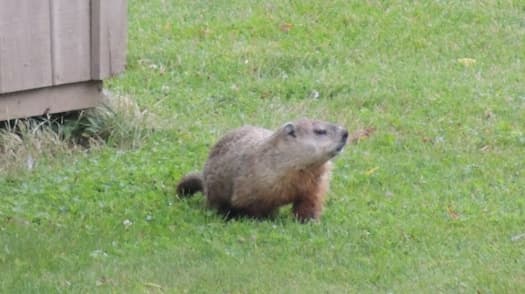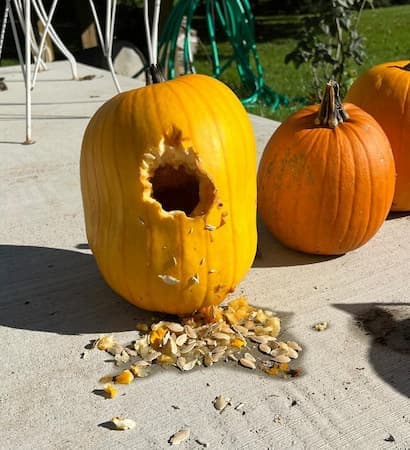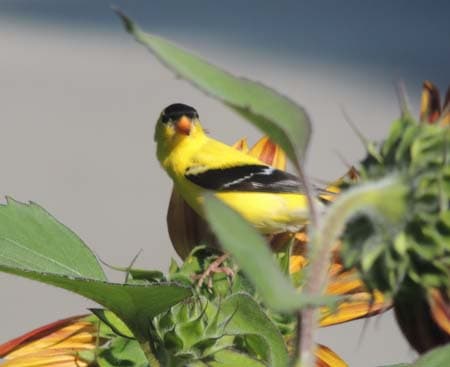How to Control Garden Animal Pests

How to Control Garden Animal Pests - They are Everywhere
The question on just about every gardener’s mind is how to control garden pests. Garden animal pests are seemingly everywhere. And they arrive looking for a free meal just as your fruits and vegetables are ripening. Let’s keep deer and other foraging animals on the other side of the garden fence. Find out how to control garden animal pests.
Home and commercial gardens constantly face a broad assault from a wide array of animals and other pests. These hungry marauders come from just about everywhere, the sky, the ground, and even underground. As a gardener, consider yourself an excellent soldier who is equal to the task at hand. Even the best armies in history find it a difficult challenge, to face an enemy coming from this many directions at the same time. As good growers, we must successfully beat back the never-ending invasion every year.
We can help you to defend against this wide range of garden enemies and win the battle!!

How to Control Garden Animal Pests - Know Your Enemy
Chipmunks – they’re cute, but they’re a nuisance.
Deer Control – A fence works for the vegetable garden. But what do you do to protect your flower bed?
Ground Hog Control – also called woodchucks, they love the vegetable garden. People may describe them as shy. But they are sly as they dig under your fence.
Moles and Voles – Watch out for these underground feeders in your lawn and garden.
Opossum – These ugly critters love your grapes, peaches, and other fruits. See them at night hanging upside down in your fruit trees.
Rabbits and Bunnies – Those cute little bunnies have a big appetite. But they are not cute in your garden.
Raccoon Control – We don’t have anything nice to say about raccoons. They just love corn and other vegetables.
Squirrels – Among other things, squirrels love tulip bulbs, corn, and much more.
Also, see Insects Pests.
How to Control Garden Animal Pests that Attack from the Ground
The ground assault on our gardens comes from a wide range of animal pests. Most notably among this group are: rabbits eating our beans and lettuce, woodchucks (groundhogs) eagerly munching on a wide variety of fruits and vegetables, deer in the cornfield, in our apple trees, and lettuces. In reality, just about any herbivore that walks or crawls on the surface of the planet is a real threat to your vegetable crop, flower beds, shrubs (especially in winter months), and even your thorny rose garden.
Homo Sapien animals can be a hazard to your garden, too. Take, for example, my son’s High School graduation party. The kids played volleyball next to the pumpkin patch and volleyball “missiles” were flying in every direction. If a dog is loose in your yard, your flower and vegetable gardens are at risk of being trampled. And, believe it or not, Man’s Best Friend, eat tomatoes and some other vegetables.
A defensive stand is important to deter this wide array of varmints. The best defense is a twenty-foot stone castle, surrounded by a wide moat. The moat will deter the beasts that can’t swim and the smooth face of the stone wall is unscalable by most climbing critters. Can’t build a castle and moat? Then, we recommend you start with a good rabbit fence that is three, preferably four feet high. Add to this defense, as you are able and as necessary.

Our Recommendations to Deter Ground Animal Pests
First Step: Install a three to four-foot rabbit fence. The close mesh will keep out rabbits, and other small animal pests, who can slip between normally wide fencing. Don’t be surprised though, to find a few small and energetic bunnies who learned to jump up and through the wider spacing towards the top. The enemy is stealthy. Deer can jump a fence, or simply step over a short one. If you have plants that deer enjoy, raise the pole vault by taking a clothesline or rope, and tying it five to six feet above the ground over the fence. This may require higher stakes.
Step Two: Frequently check the bottom of the fence for spots where an animal can dig and crawl under. Fortify weak points. Consider rimming the fence with boards or bricks, to deter animals from digging under the fence.
Step Three: There are a variety of products at your local garden store that produce varying degrees of success. These include concentrated fox urine and other carnivore animals, that are natural predators to garden munching animal pests. Garlic sprays and blood meal will deter some animals. Hot pepper sprays can also deter pests.
Step Four: Set out “Have-a-heart” or “Live Traps”. These traps capture animals without harming them. They can be transferred to another location and released far from your garden.
Very important: Check local rules and regulations for trapping, transporting, and release of wild animals. Some communities allow homeowners to trap the animals but insist upon removal and release or disposal by trained animal control agents.
Step Five: Consider a cat. They do a great job keeping rabbits and other small animals away.
Garden Animal Pests - Tunnel Boring Enemies
Tunnel boring pests are primarily rodents, most often moles, voles, and mice. It also includes chipmunks. These pests cause damage to your garden in two ways. First, they eat vegetables in the garden. They attack both the root crops and above-ground crops. It can be disappointing to grow carrots with great tops and a wide root protruding from the soil, only to find a mole that has chewed away at the carrot root. Mice will nibble away at the top of the root. If you have ever had a mole tunnel under a cantaloupe or pumpkin, and eat through just as the fruit ripens, you know the damage these pests inflict.
A second problem with tunneling rodents is disruption of the root system. In their tunneling effort, they do not care about the primary or secondary roots they disrupt. This weakens and can even kill the plant. More than once, this gardener has had a giant sunflower topple over as a result of a weakened root system from tunneling moles.
Here are some ideas to minimize this problem. We say "minimize", as moles and mice are often difficult to completely eradicate.
A Better Mouse Trap- The old-fashioned mouse trap is difficult to improve upon. And it is environmentally friendly. What makes it work, is the right bait. The best bait we have found is peanut butter. Mousetraps are often used in sheds and under woodpiles. For use in the garden, we recommend they be covered by a five-gallon bucket or box. This offers some protection to domestic animals, birds, and kids, from accidentally getting hurt.
Many have asked: Unfortunately, there are few ways to keep those cute little chipmunks from becoming caught in these traps. Remember, a chipmunk is a cute, garden plant-eating rodent.
Poison Baits: While you rarely see the dead rodent, manufacturers claim these poison baits are very effective. Your proof is a decline of rodent activity. If you do not want to deal with the disposal of the carcass, this may be the answer for you. Poison bait is not good for the environment, or your health. If you use them, do not put them inside a vegetable garden. Very importantly, keep it out of reach of young children and pets.
Gas Bombs: A gas bomb can be effective in eliminating rodents. Like poisons, it is not environmentally friendly, and you usually don’t see the results. It takes work to set up. It is only effective if the rodents are in the tunnels, and all escape routes are blocked.
There are several other methods. Some emit a high-pitched sound to chase these pests from your yard. They move somewhere else…perhaps to your neighbor’s yard. The move may only be temporary.

Garden Animal Pests that Attack from the Sky
Attacks by birds through the air are the hardest to control. Just about anything you use will have limited results. Cherry trees are popular targets, just as the fruit ripens. Pea plants and tender shoots of many plants are common targets too. Corn can be raided by crows, Blue Jays, and other birds. Sunflowers are popular with many birds, especially the widely popular Cardinals. The list goes on…….
On the other hand, gardeners often grow fruits and vegetables which attract songbirds. Those same beautiful birds that grace your bird feeder, also enjoy snacking on your garden. Many gardeners are bird lovers in disguise and use flowers and vegetables to entice birds to their backyard bird sanctuary. In this case, the birds are the result of your gardening efforts.
Here are some bird control and deterrence ideas:
Ye Olde Scarecrow: Some people claim limited success using scarecrows to scare birds away. Even if they afford little deterrence, scarecrows are a neat visual addition to your garden.
Noisemakers: Birds are skittish. A little noise goes a long way in scaring them off. Common noisemakers include aluminum pans (an increasingly rare commodity in a microwave society), wind chimes, and tape recordings of bird predators.
Replicas of Natural Enemies: Plastic owls and snakes sometimes fool birds. However, we believe you can fool some of the birds all of the time, all of the birds some of the time, but you can’t fool all of the birds all of the time.
There's Reason to Cheer. We have Unexpected Allies
While we talk a lot about garden pests, you do have some allies in the insect and animal kingdom. Some good examples are birds that eat insects and grubs. Bats are among this group. There are also beneficial insects, like ladybugs and praying mantis, that chow down on harmful insects. Make sure your animal and insect control program considers the use of these beneficial garden helpers.
Related Articles
Please support our site. Shop for:
- rmmatthews100@hotmail.com
- 585-721-6528
- Rochester, NY
©1999-2024 GardenersNet.Com, All Rights Reserved

